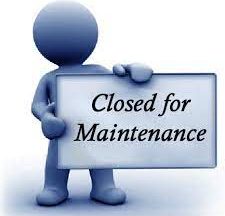 September 2021
September 2021
If there is one lesson in the Champlain Towers South (Florida) condominium building collapse, it is the importance of preventative maintenance and its link to condo fees.
It has become clear that the building had known and extensive problems. Experts suspect the community failed to adhere to a professionally managed waterproofing program, and repairs of known water issues, which could have ensured the building structure remained habitable for a very long time. The structure was allowed to weaken due to exposure to moisture and lack of regular care, and developed weaknesses that resulted in the building collapse.
This is not an isolated problem. Since the highly publicized building collapse, no fewer than eight buildings in the state have been deemed unsafe and evacuated. Both residents and the board were in no rush to raise funds for this work. Only when it was too late did they start to accumulate funds. Now they have a pile of rubble and lives have been lost.
In Ontario such problems can be caused by winter salt, road work and other factors. Yet a similar building collapse is unlikely to occur because of requirements in the Ontario Condominium Act. The Act protects condominium owners from catastrophically bad mistakes, and communities from owners failing to pay their share. It remains far too easy, however, for condo fees to remain too low, a reserve fund to be underfunded, and preventative maintenance to be delayed or ignored. The Ontario Condominium Act does not help to determine how much money must be set aside to maintain a building. It doesn’t weigh in on the many assumptions that have a substantial impact on the assumed future value of a reserve fund or future cost of presumed repairs. For many the tendency is to sacrifice tomorrow’s security to save money today. Owners prefer money in their hands over paying more for future repairs.
Condo owners and boards can be more focused on the short-term. Their goals are to keep fees low and sell the property before problems become evident and reduce resale value. Setting money aside for future and unknown repairs is not high on their list of priorities.
With high-rise condominium buildings dating back to the 1970s, many are now over 50 years old. This is a time when major infrastructure decisions must be made based on currently available funding. The condo board is responsible for committing to this repair work and raising the funds to do so. Owners can be skeptical and opposed to paying these costs in the form of higher condo fees or special assessments. A condo board lacking in experience and unprepared to oppose these owners is a potential disaster.
“Current laws don’t require that owners or directors heed the warnings they receive from engineers or consultants, or advice on what is considered sufficient money in a reserve fund for undertaking future major repairs to building components” explains Patrick Banning of IRC Building Sciences Group a Rimkus Company which offers reserve fund studies and planning. The unfortunate truth is that many estimates of future repair costs are understated. Most directors would never be elected if they were to support dramatic fee increases for future or necessary work. These realities often result in maintenance, repair or replacement work being ignored or deferred.
The reserve fund study is a further challenge. It is a forward-looking statement making estimates of funding requirements and necessary repairs to maintain the home. It is a guesstimate comprised of many assumptions which can be manipulated by those lacking experience or having ulterior motives.
Maintaining older high-rise condominium buildings is something few have experience with. Good boards ensure their infrastructure is regularly inspected and are quick to follow through on recommended maintenance and repairs. Others look at cutting back on maintenance and repairs as a way to save money and reduce condo fees. As we’ve seen in Florida, this leads to catastrophic results.
 If our high-rise homes are to remain livable, communities need to be proactive at identifying and funding necessary preventative maintenance, regardless of cost, to avoid even more expensive repairs down the road.
If our high-rise homes are to remain livable, communities need to be proactive at identifying and funding necessary preventative maintenance, regardless of cost, to avoid even more expensive repairs down the road.
Champlain Towers South collapsed because of decades of neglect resulting in a nearly $20 million (CDN) repair bill. How many buildings are moving in the same direction?
Find Vendors in these Related Categories
- Accounting
- Building Sciences
- Contractors - Electrical
- Contractors - General
- Contractors - Mechanical
- Door & Lock Services
- Energy Services - Water
- Engineering Services
- Financial Services - Loans
- HVAC
- Paving, Concrete and Epoxy Coatings
- Plumbing Services
- Pressure Washing
- Reserve Funds and Performance Audits
- Roofing
- Roofing - Green
- Water Proofing & Systems







